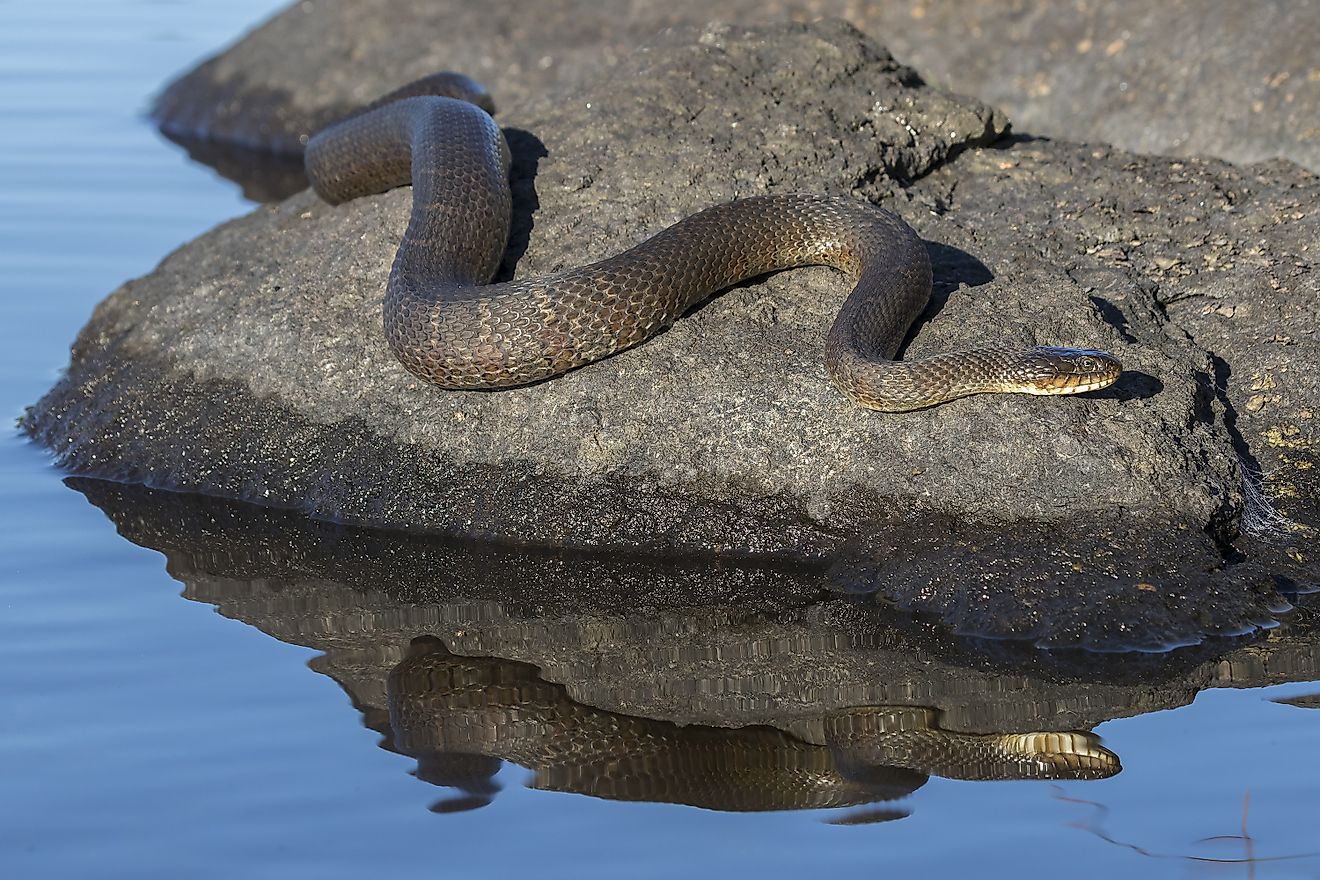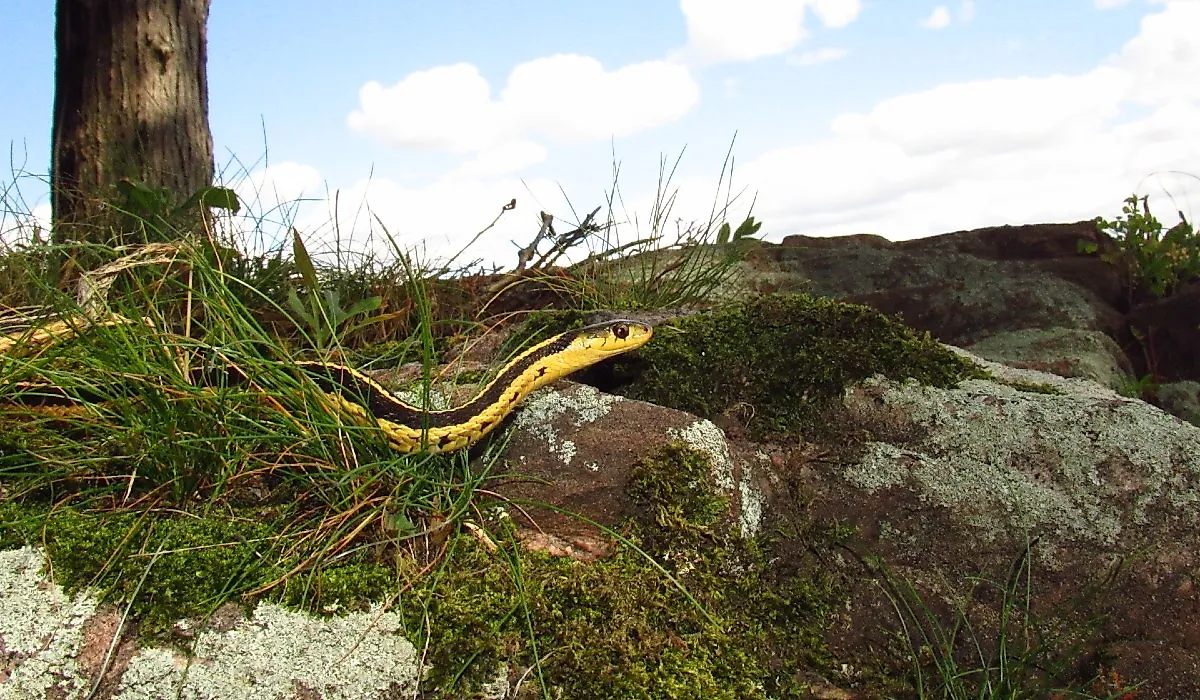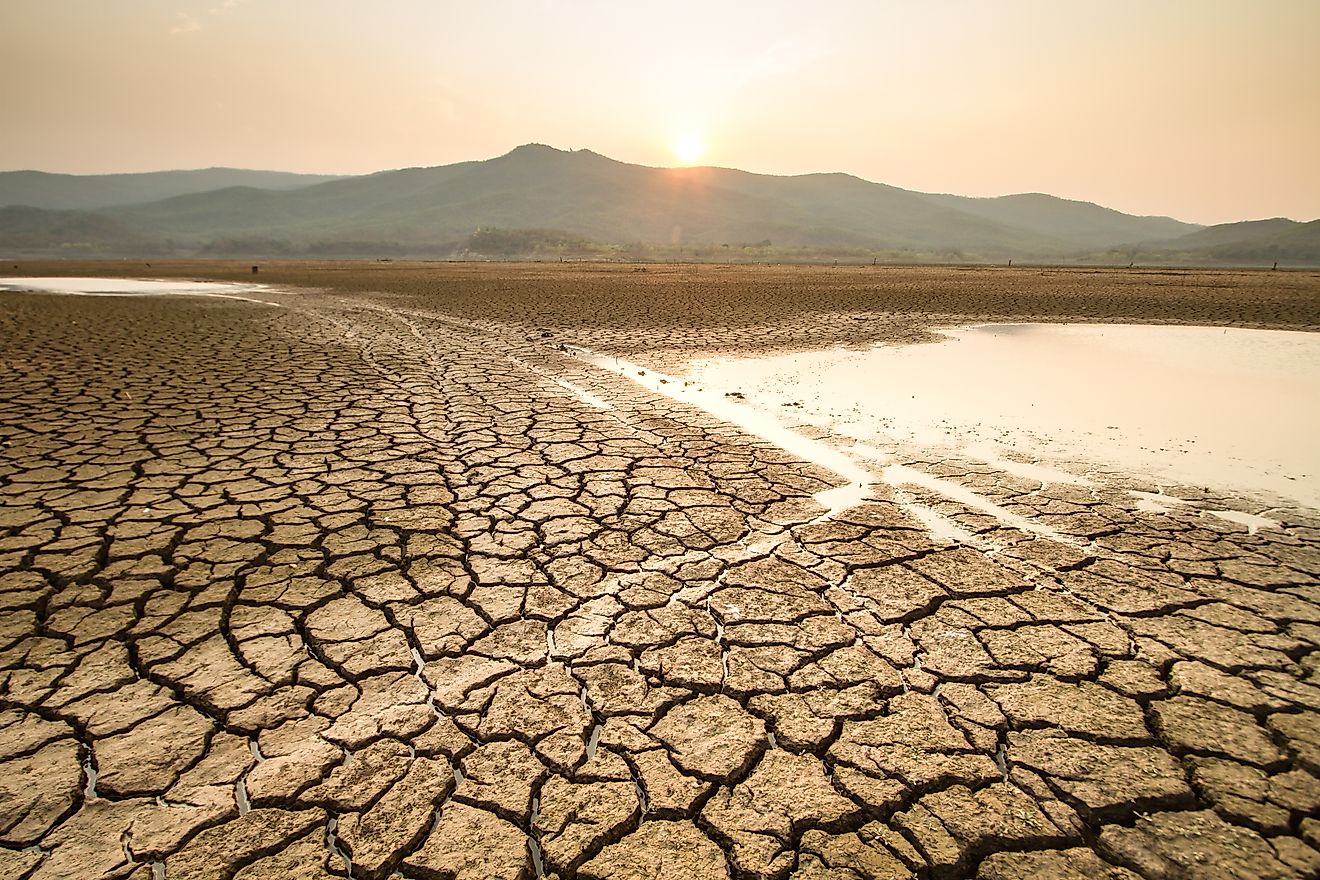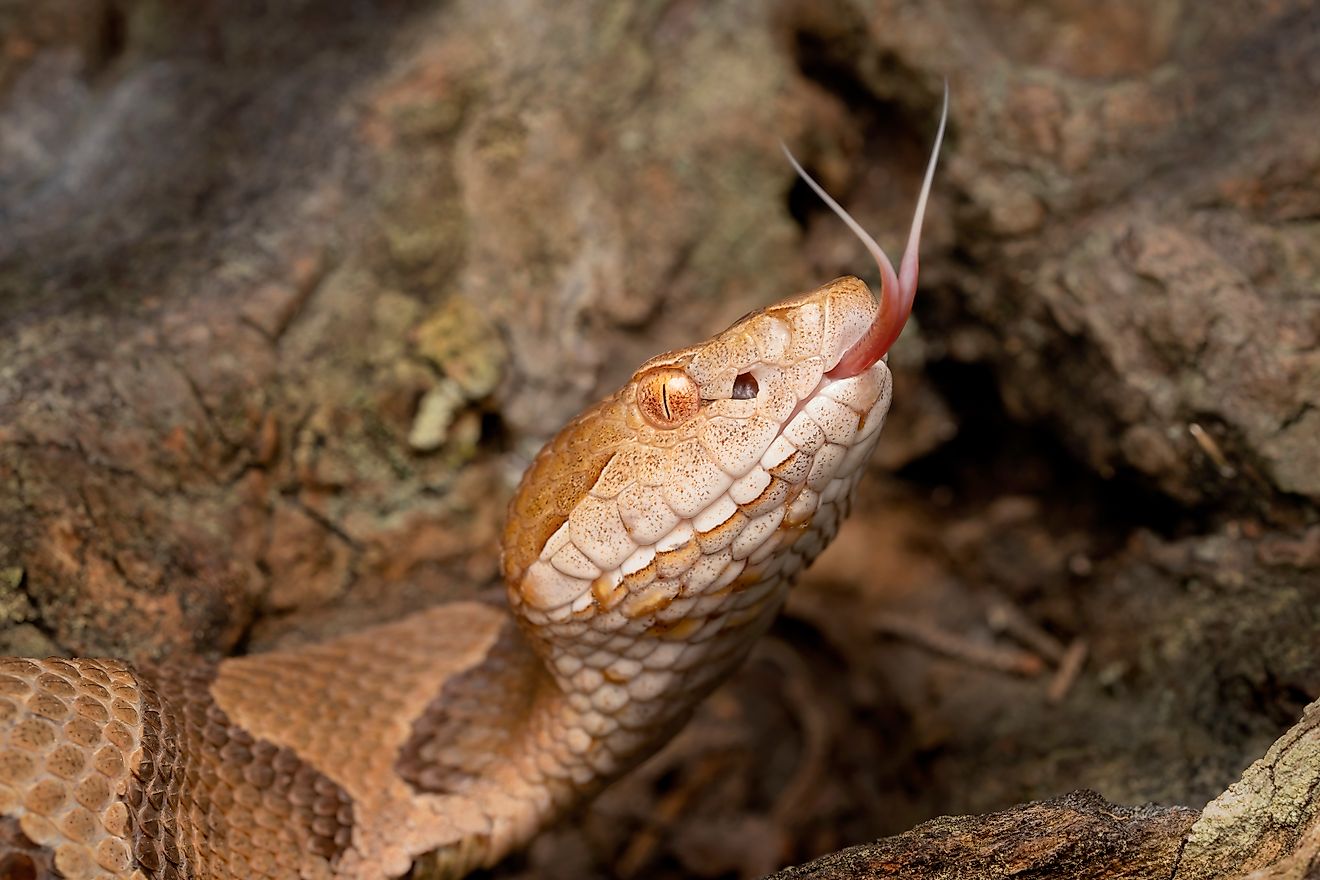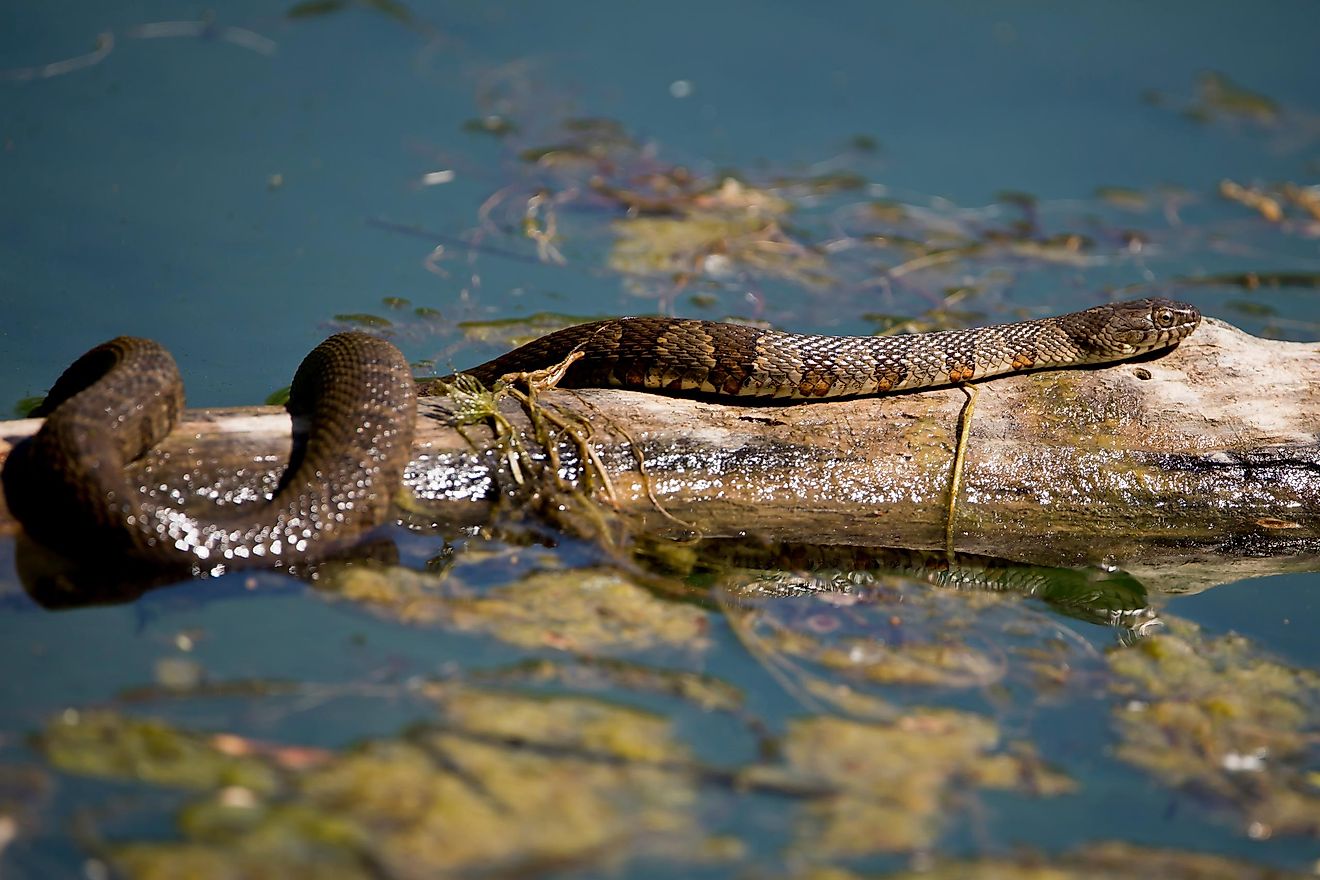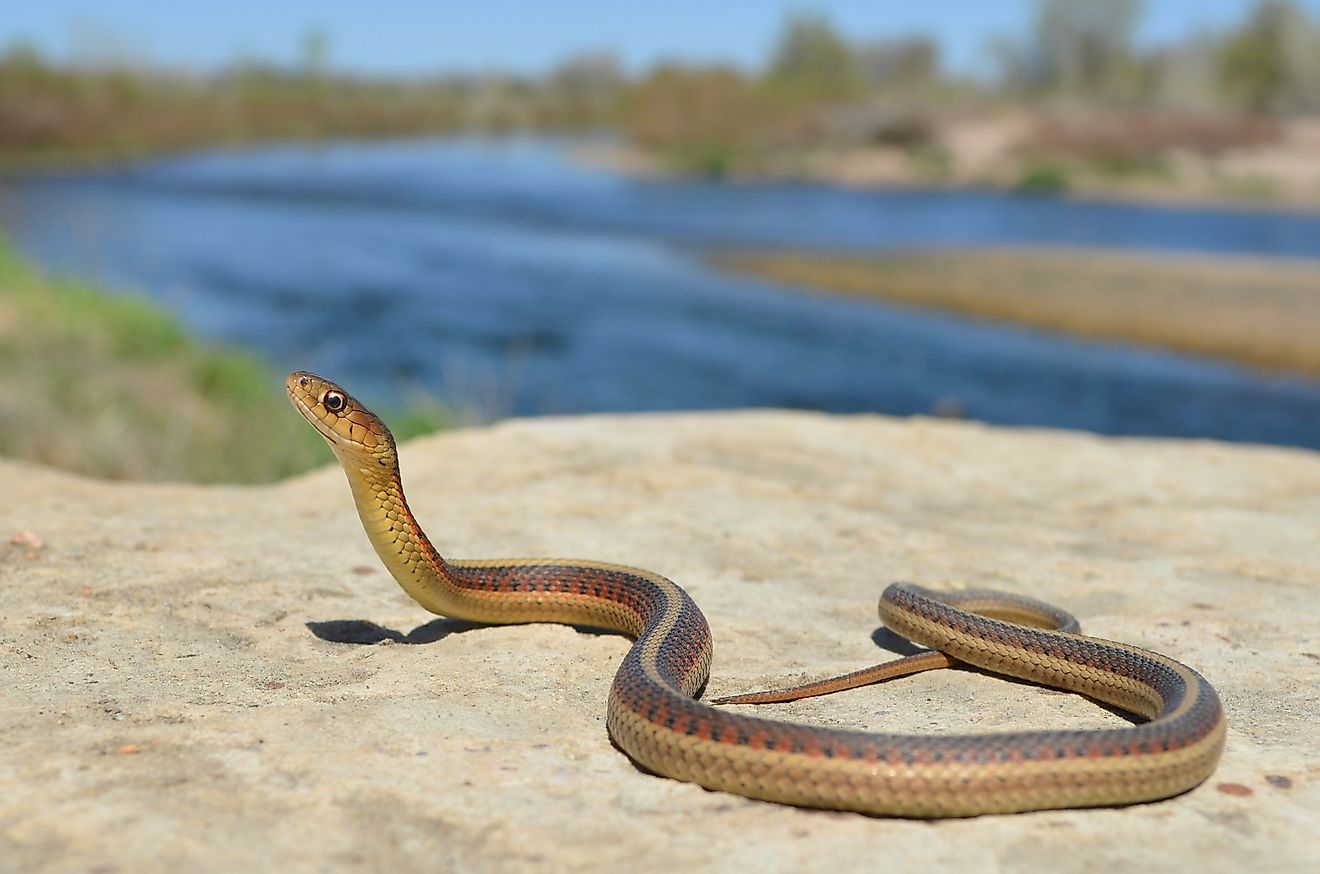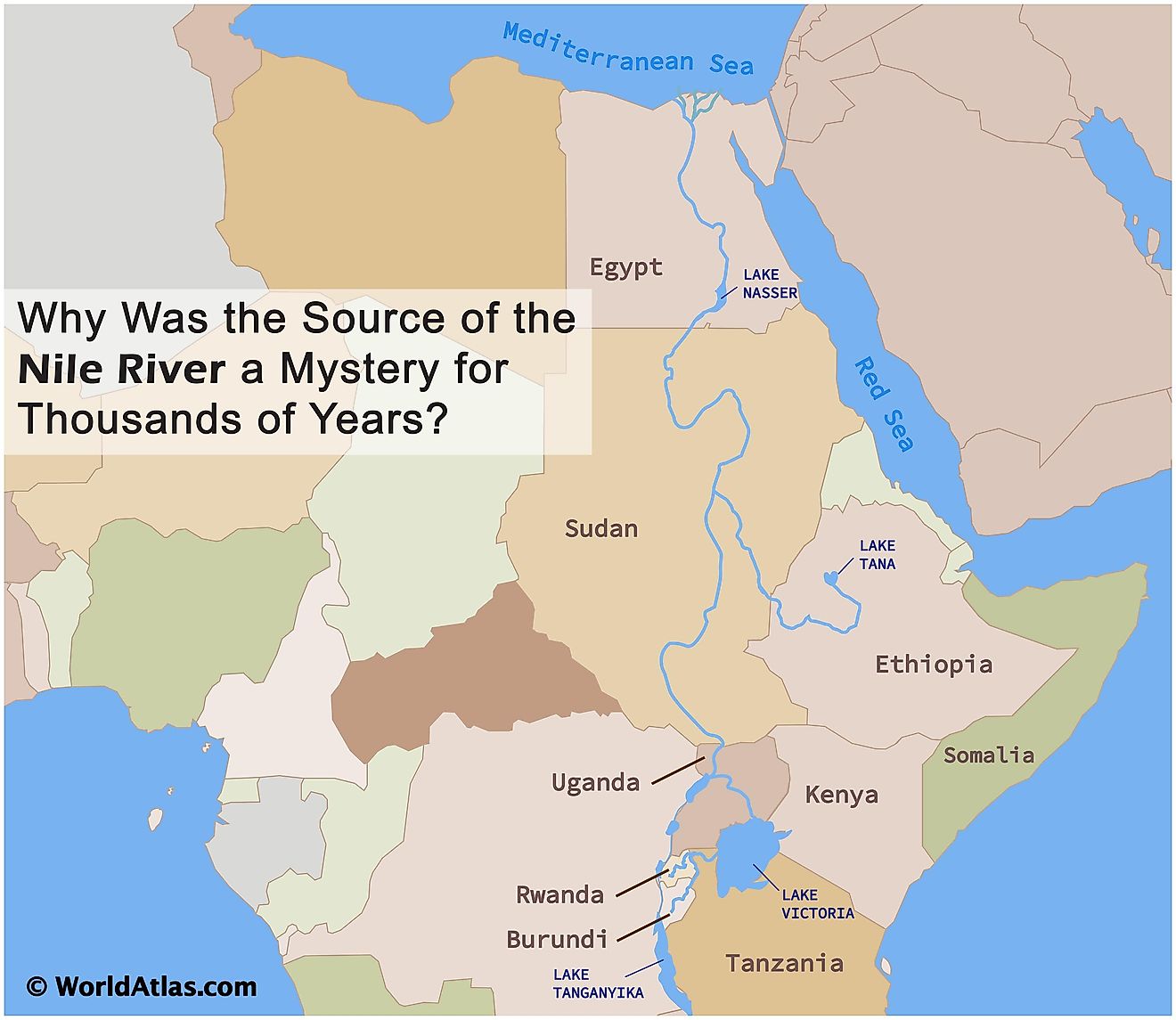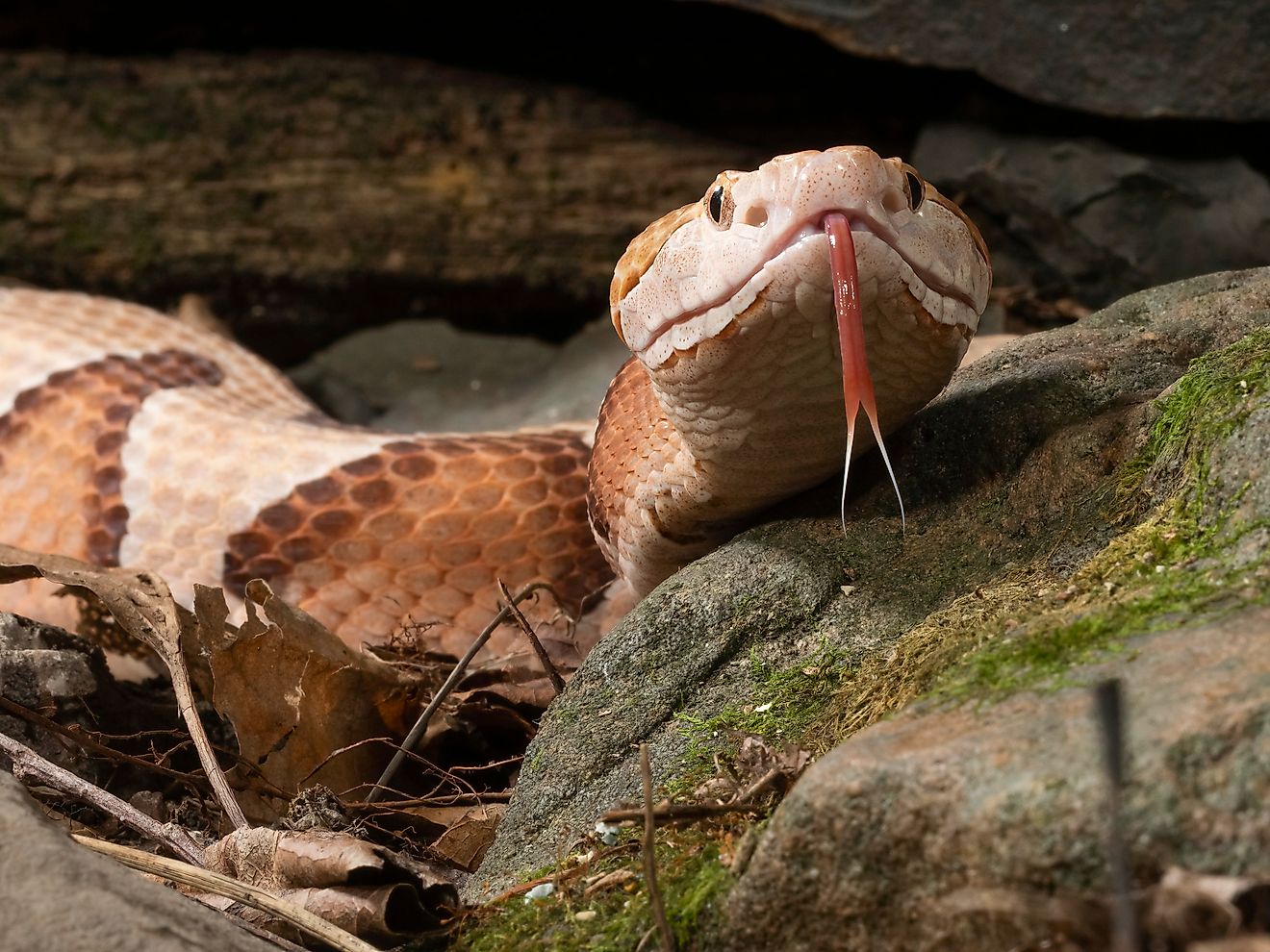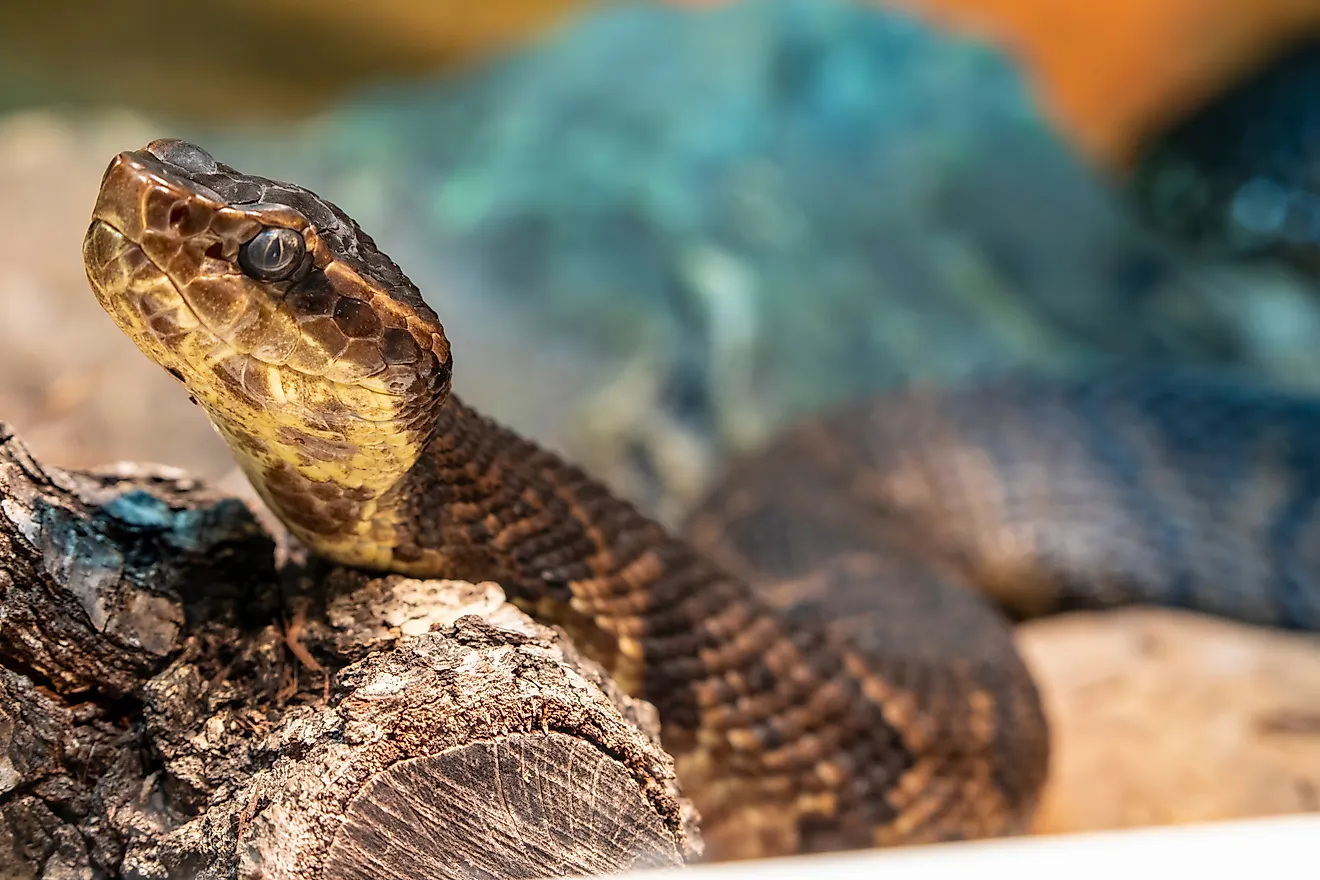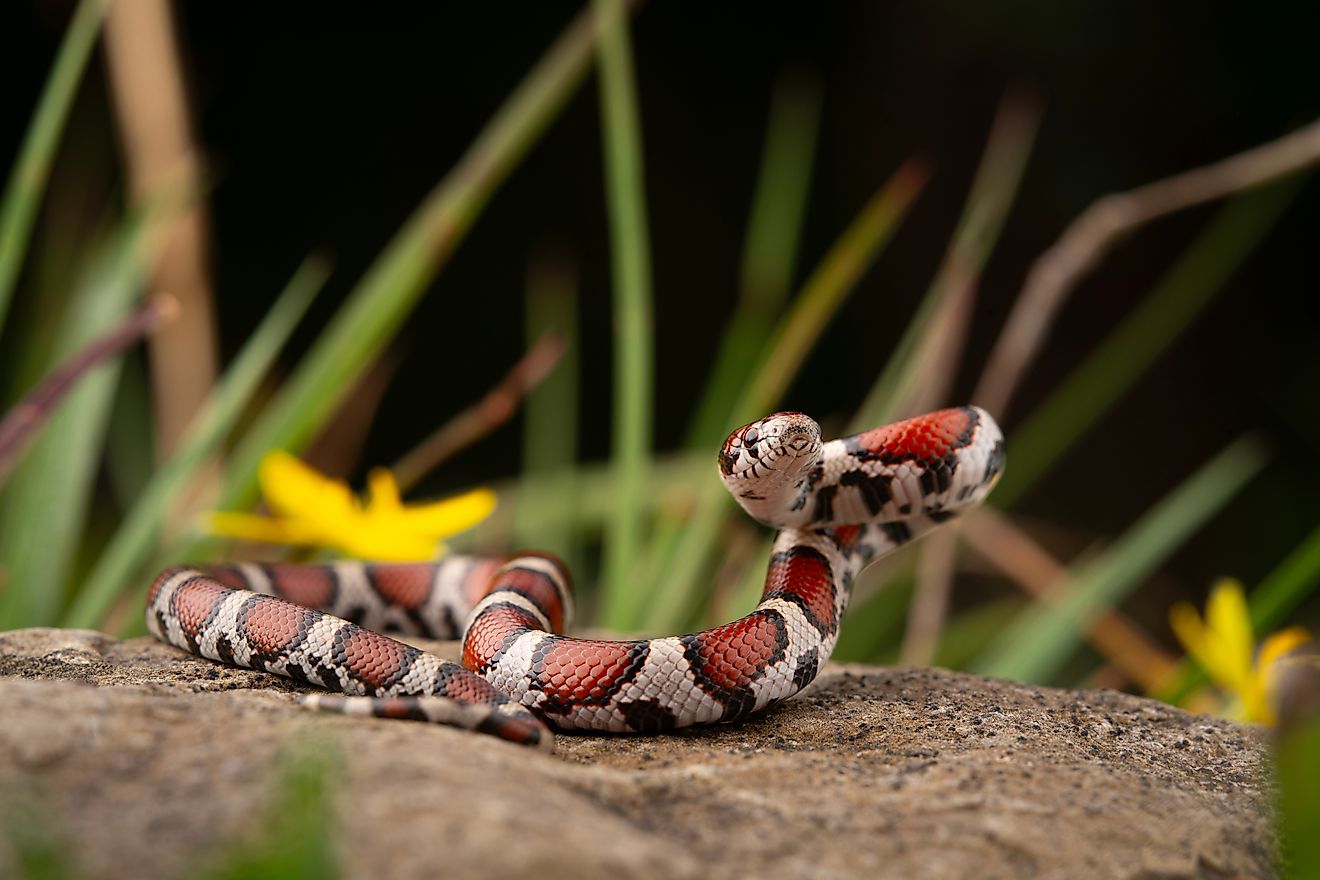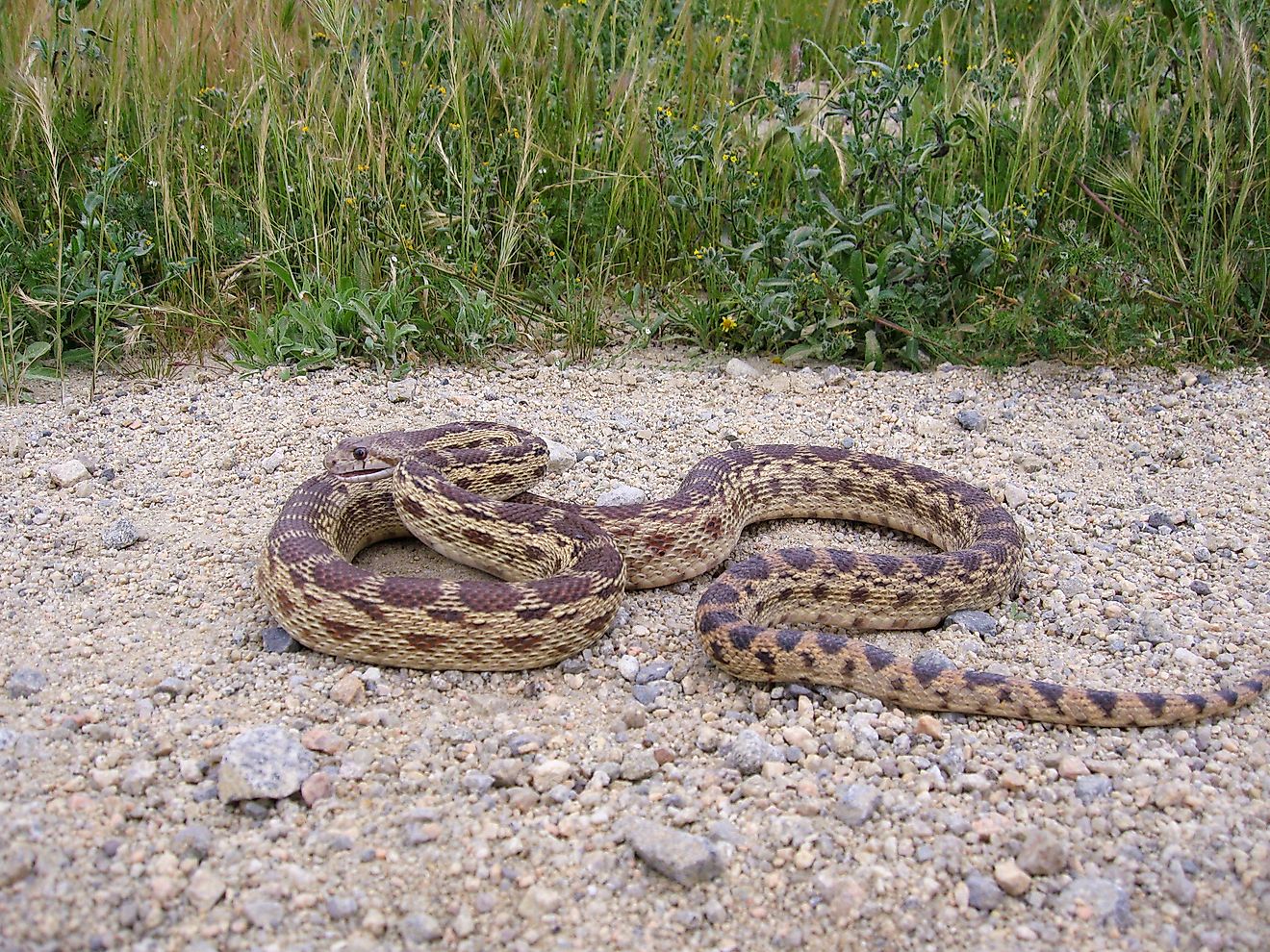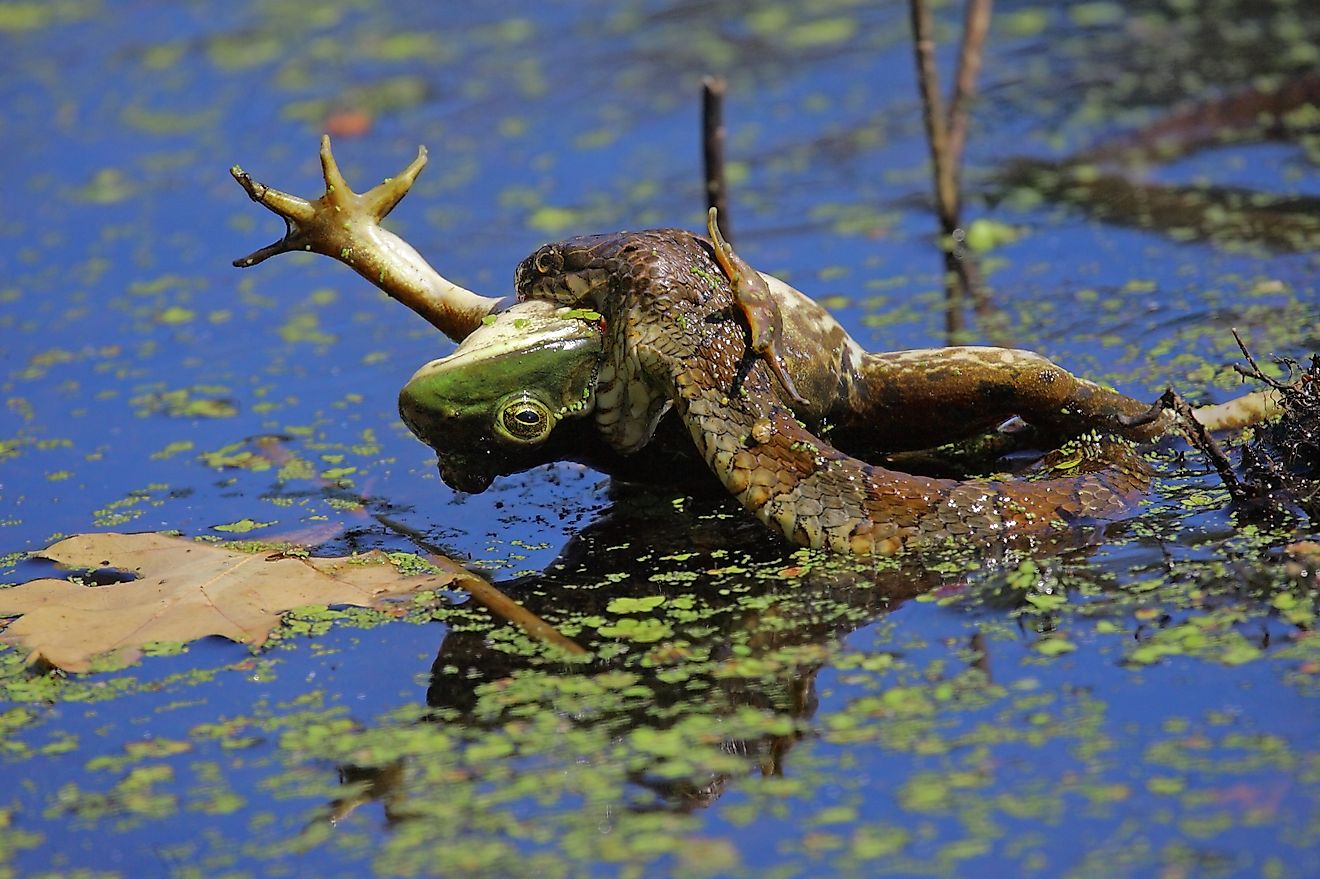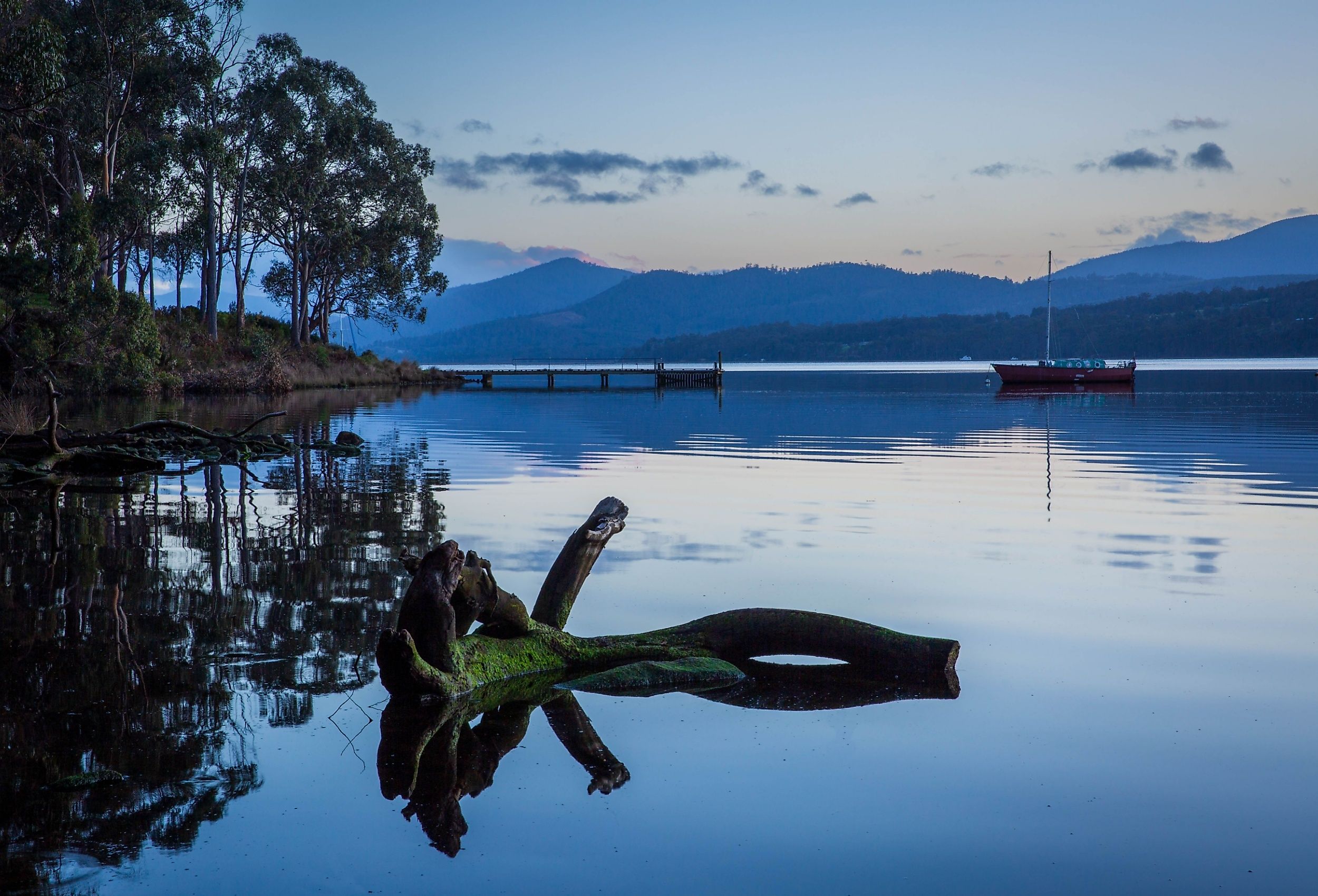
4 Most Snake-Filled Bodies Of Water In Tasmania
Tasmania only has three species of snakes, all of which are venomous: Lowland copperheads, white-lipped snakes, and tiger snakes. From the island's winding rivers to its remote lakes, its varied environments provide the marshes, wetlands, and grassy banks that these reptiles depend on for food and shelter. This article explores the bodies of water where Tasmania's snake populations are most concentrated, highlighting the landscapes that sustain them and the reasons why these sites remain hotspots for reptile activity.
Derwent River
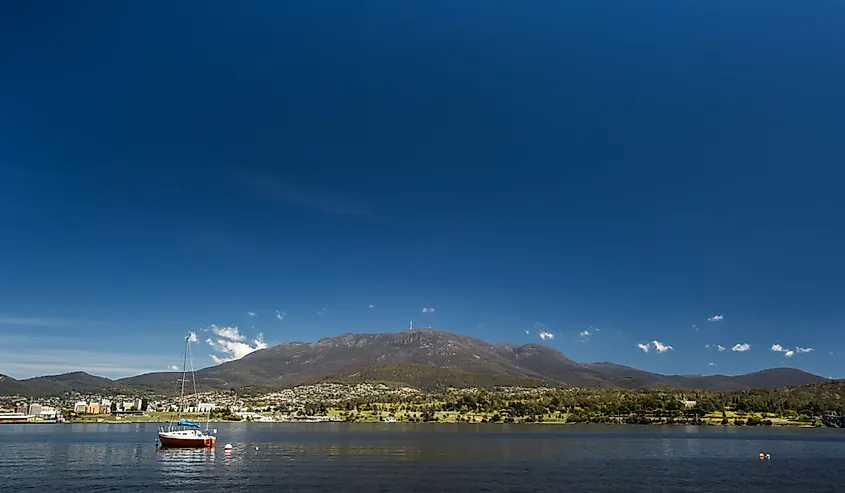
The Derwent River, stretching over 200 kilometers from Lake St. Clair to Storm Bay, is one of Tasmania’s most important waterways and also a notable habitat for snakes. The river’s banks and wetlands create ideal conditions for the highly venomous tiger snake, which is widespread in southern Tasmania. These snakes thrive in the surrounding grasslands, reed beds, and marshy areas of the river, where prey such as frogs, birds, and small mammals are abundant.
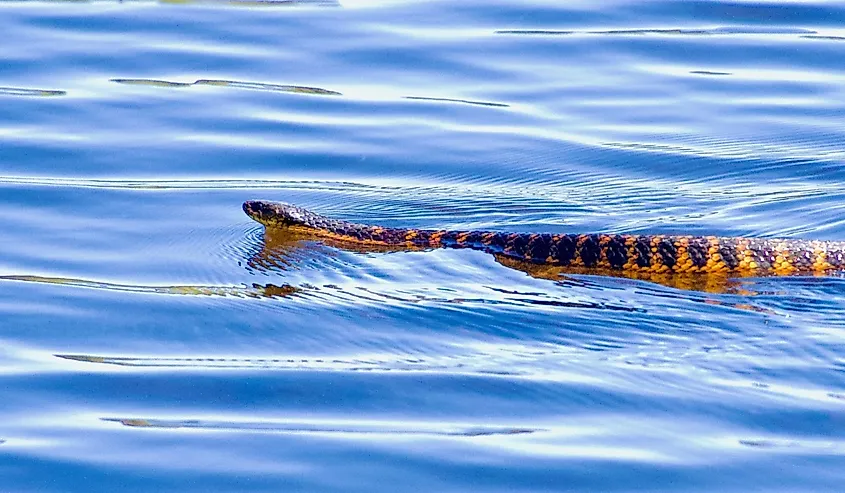
During the warmer months of the year, they can often be seen basking near the water or swimming across shallow sections. The river’s mix of urban development and natural habitats means human encounters are also not uncommon, particularly around Hobart and the estuarine zones along the river. While the Derwent is popular for fishing, boating, and rowing, you should definitely remain cautious, as the river’s lush margins are among Tasmania’s most reliable places to spot potentially harmful snakes.
Tamar River
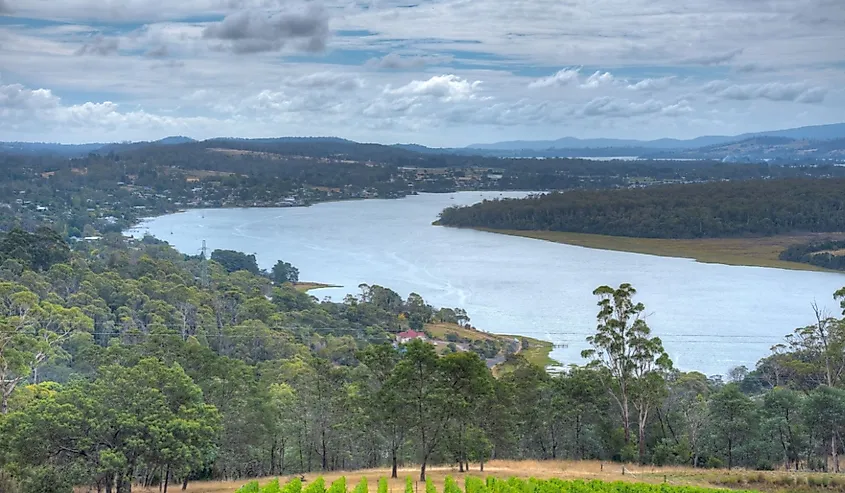
The River Tamar, running 71 kilometers from Launceston to Bass Strait, is another one of Tasmania’s most significant waterways and a recognized hotspot for reptile activity. The tidal flats, wetlands, and salt marsh habitats along its banks support large populations of frogs and various waterbirds, also making it another area attractive to the tiger snake. This species, known for its strong swimming ability, is frequently observed in and around the Tamar, especially when the weather is warm (which tends to make snakes of all kinds more active). The river’s broad mudflats and reed-filled margins give other species, like lowland copperheads and white lipped snakes, ample cover for hunting and basking as well.
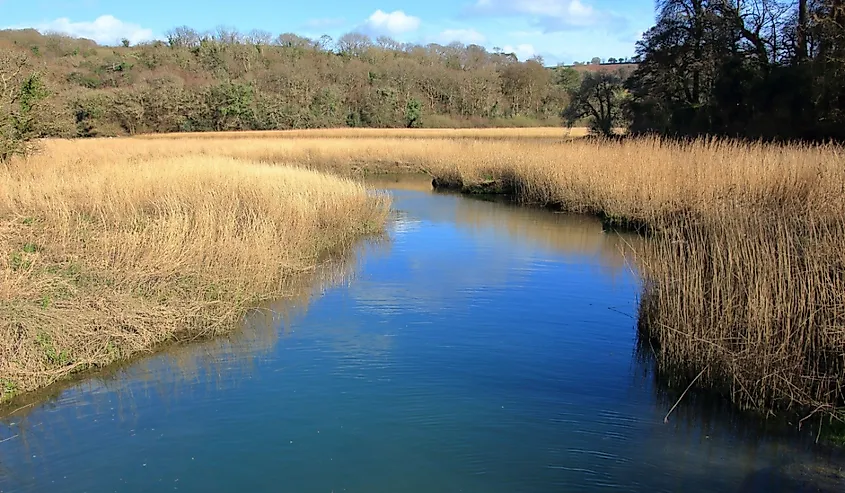
Recreational areas, walking tracks, and vineyards that border the river bring people into regular contact with these snake habitats, so sightings are common. Regardless of what you come here to do, know that the Tamar is a crucial ecological corridor that ought to be respected, sustaining both aquatic life and some of the island’s most prominent venomous reptiles.
Lake Pedder
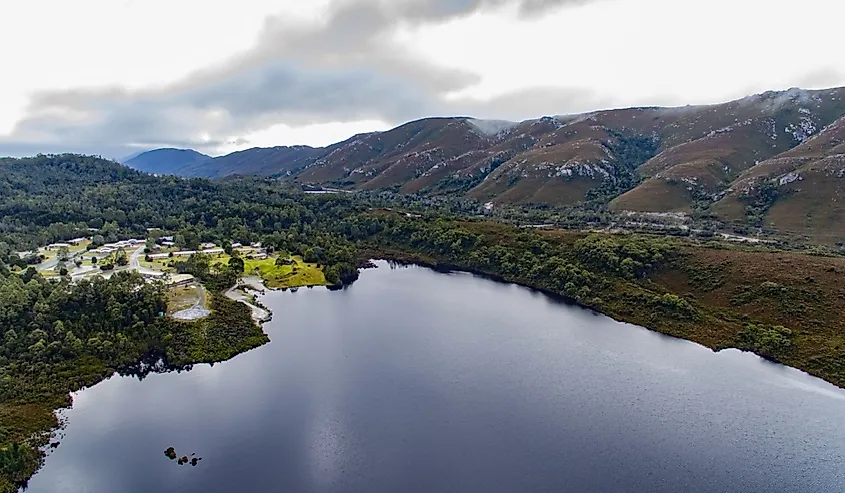
Lake Pedder, located in southwest Tasmania within the Tasmanian Wilderness World Heritage Area, is an artificial lake formed by the flooding of several river valleys in the 1970s. Its vast shoreline of sandy beaches, heathlands, and forests has become a key environment for snake populations, particularly the tiger snake and the copperhead. These snakes thrive in the damp, open habitats surrounding the lake, where frogs and small mammals are plentiful. Copperheads are especially adapted to the region's often cooler, wetter conditions, making Lake Pedder one of their strongholds.
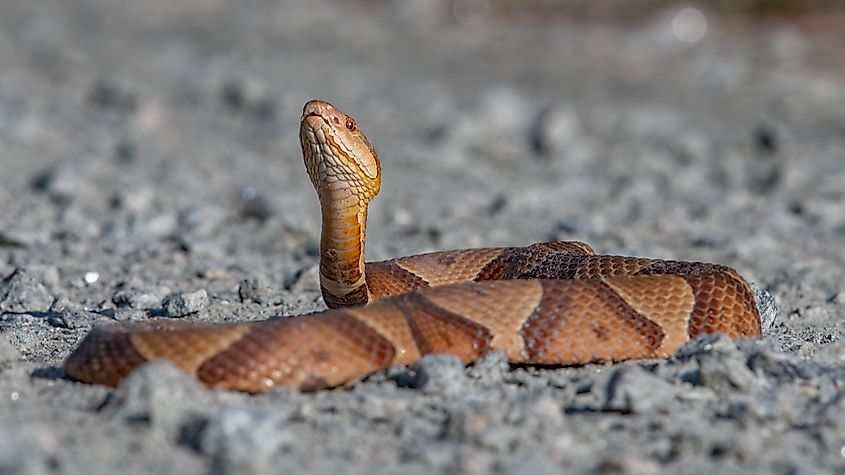
Despite its remote setting, Lake Pedder attracts bushwalkers, anglers, and kayakers, all of whom should exercise care around the lake’s margins, as it remains one of the more snake-active freshwater environments in Tasmania. With that info in mind, hikers, campers, and anyone else exploring the area for prolonged periods should especially be careful while at the water’s edge.
Huon River

The Huon River, located in southern Tasmania, stretches from the Southwest National Park to the D’Entrecasteaux Channel, and is a diverse freshwater system surrounded by forests, farms, and wetlands. Its lower reaches and floodplains provide excellent snake habitat, particularly for tiger snakes, which thrive in the river’s damp grasslands and reed beds. Copperheads and white lipped snakes are also present, especially in cooler, wetter sections of the catchment.
As one of Tasmania’s major southern waterways, the Huon River is a true recreational hub, meaning you should always respect wildlife, whether watching for snakes below your feet or whatever else. With orchards, vineyards, and rural settlements bordering much of the river, human activity frequently overlaps with snake territory in the area. The Huon is a popular site for kayaking, fishing, and camping, yet visitors should remain alert when moving through long grass or along shaded banks.
Better Understand Tasmania's Snakes
Tasmania’s rivers and lakes are full of life, from birds and small mammals to hardy reptiles and more. They especially demonstrate how closely snakes are tied to the island’s waterways. While these environments attract recreation and tourism, they also serve as reminders of the state’s rich but sometimes dangerous biodiversity, and should always be treated with respect. With this knowledge, you too can safely enjoy these destinations with awareness and caution, appreciating both the beauty of Tasmania and the vital role snakes play in its ecosystems.
